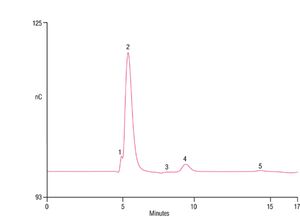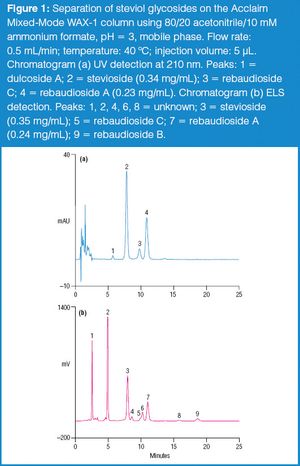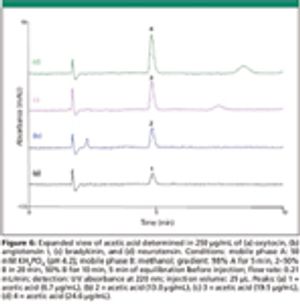Articles by Brian M. De Borba
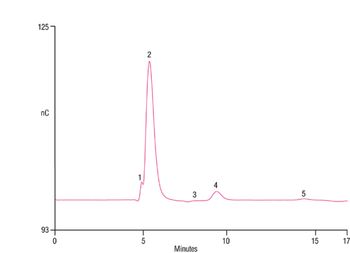
Ingestion of DEG-adulterated glycerin excipients in pharmaceuticals and personal care products, such as toothpaste, mouth wash and medicinal syrups has caused systemic alcohol intoxication, acidosis and subsequent multiorgan failure that have led to hundreds of fatalities of children and adults.

Oxytocin acetate samples were analysed successfully for both the peptide and acetate with a single method using a mixed-mode weak-anion-exchange column.
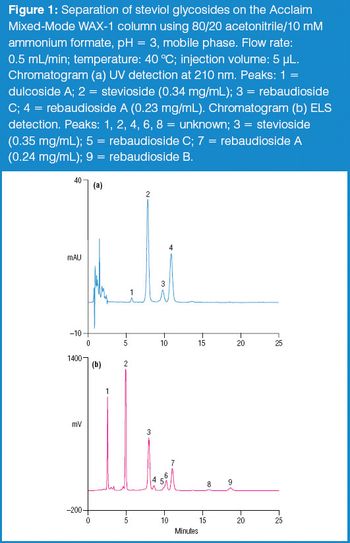
The stevia plant and its extracts have long been used as sweeteners in Asia and Latin America. Two steviol glycosides present in plant tissue, stevioside and rebaudioside A, are largely responsible for the sweet flavour.1 In December 2008, the US FDA placed rebaudioside A (also known as rebiana) on the Generally Recognized as Safe (GRAS) list of sugar substitutes to be used in foods, thereby allowing the use of rebiana as a commercial sweetener.2 The determination of steviol glycosides in these sweeteners is challenging due to their weak UV absorbance. Other detection methods, such as evaporative light scattering (ELS), can improve steviol glycoside quantification. In this proposed method, steviol glycosides were determined by UV and ELS detections in consumer sweeteners following separation on the Acclaim Mixed-Mode WAX-1 column.3




